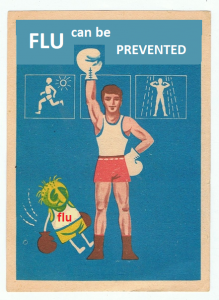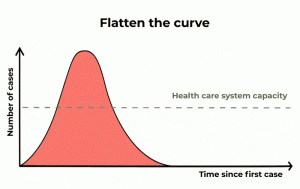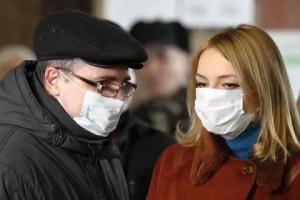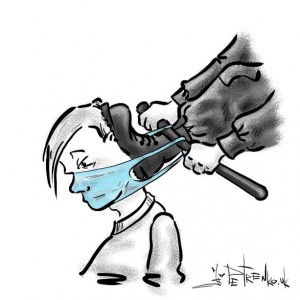 Before moving on to the main discussion, a clarification must be made. A recent Work Way article “On vaccinations” defines killed vaccines:
Before moving on to the main discussion, a clarification must be made. A recent Work Way article “On vaccinations” defines killed vaccines:
“Killed vaccines are obtained from pathogenic microbes by neutralising them with various chemicals (formalin, etc.), by heating them or by ultraviolet rays. Such are the killed vaccines against typhoid, cholera and tick-borne encephalitis”.
Here we need to make it clear that neutralising the germs in such vaccines does not mean that all the viruses in them die. Most often, vaccines are treated with formalin. But formalin does not completely kill viruses and bacteria, but biochemically binds them and makes them inactive.
Viruses and bacteria lose their vitality and ability to harm living beings under the influence of formalin, but remain alive. This situation is absolutely necessary because completely dead viruses and bacteria cannot create immunity in the human body. This is directly linked to the function of the immune system in humans and animals: only living viruses and bacteria can cause disease, which means that only living viruses and bacteria can be detected by the immune system and recognised as a threat to the body. Continue reading
 Extremely high lethality rate due to complications associated with the viral respiratory infection COVID-19 is one of the main arguments coming from the coronavirus scammers today. In my “
Extremely high lethality rate due to complications associated with the viral respiratory infection COVID-19 is one of the main arguments coming from the coronavirus scammers today. In my “ Microbes
Microbes In the article
In the article  Unfortunately, it is now safe to say that practically the entire “left-wing” movement of the Russian Federation has actively joined in on assisting the feigning of a “pandemic” of a
Unfortunately, it is now safe to say that practically the entire “left-wing” movement of the Russian Federation has actively joined in on assisting the feigning of a “pandemic” of a  Marxist-Leninist Workers’ Movement (MLWM) “Work Way” has already repeatedly published analytics of the so-called “quarantine measures”, proving their complete inadequacy, and the fact that
Marxist-Leninist Workers’ Movement (MLWM) “Work Way” has already repeatedly published analytics of the so-called “quarantine measures”, proving their complete inadequacy, and the fact that  Discussions dedicated to this topic are very popular in our society. But the opponents normally only talk about specific figures, discussing salaries, general earnings and expenses of the population, completely forgetting the main question – what the phrase “standard of living” actually means?
Discussions dedicated to this topic are very popular in our society. But the opponents normally only talk about specific figures, discussing salaries, general earnings and expenses of the population, completely forgetting the main question – what the phrase “standard of living” actually means? Not so long ago, on April 17, 2020, a reader’s letter called “Lawless and order” was published on our website. Noting the reader’s observation that the Russian authorities have imposed laws that seem to justify the restrictions of social activity of citizens and their basic rights and freedoms, and sharing his indignation, I would like, however, to complement and clarify some of his conclusions.
Not so long ago, on April 17, 2020, a reader’s letter called “Lawless and order” was published on our website. Noting the reader’s observation that the Russian authorities have imposed laws that seem to justify the restrictions of social activity of citizens and their basic rights and freedoms, and sharing his indignation, I would like, however, to complement and clarify some of his conclusions.  Contrary to the persistent “unwillingness” of COVID-19 disease to spread to a scale at least comparable to what is considered an epidemic in terms of evidence-based medicine, the authorities have taken another ridiculous step: a number of regions have introduced the so-called “mandatory mask wearing”. In this regard, the question of legitimacy of this “quarantine measure” immediately arises.
Contrary to the persistent “unwillingness” of COVID-19 disease to spread to a scale at least comparable to what is considered an epidemic in terms of evidence-based medicine, the authorities have taken another ridiculous step: a number of regions have introduced the so-called “mandatory mask wearing”. In this regard, the question of legitimacy of this “quarantine measure” immediately arises.